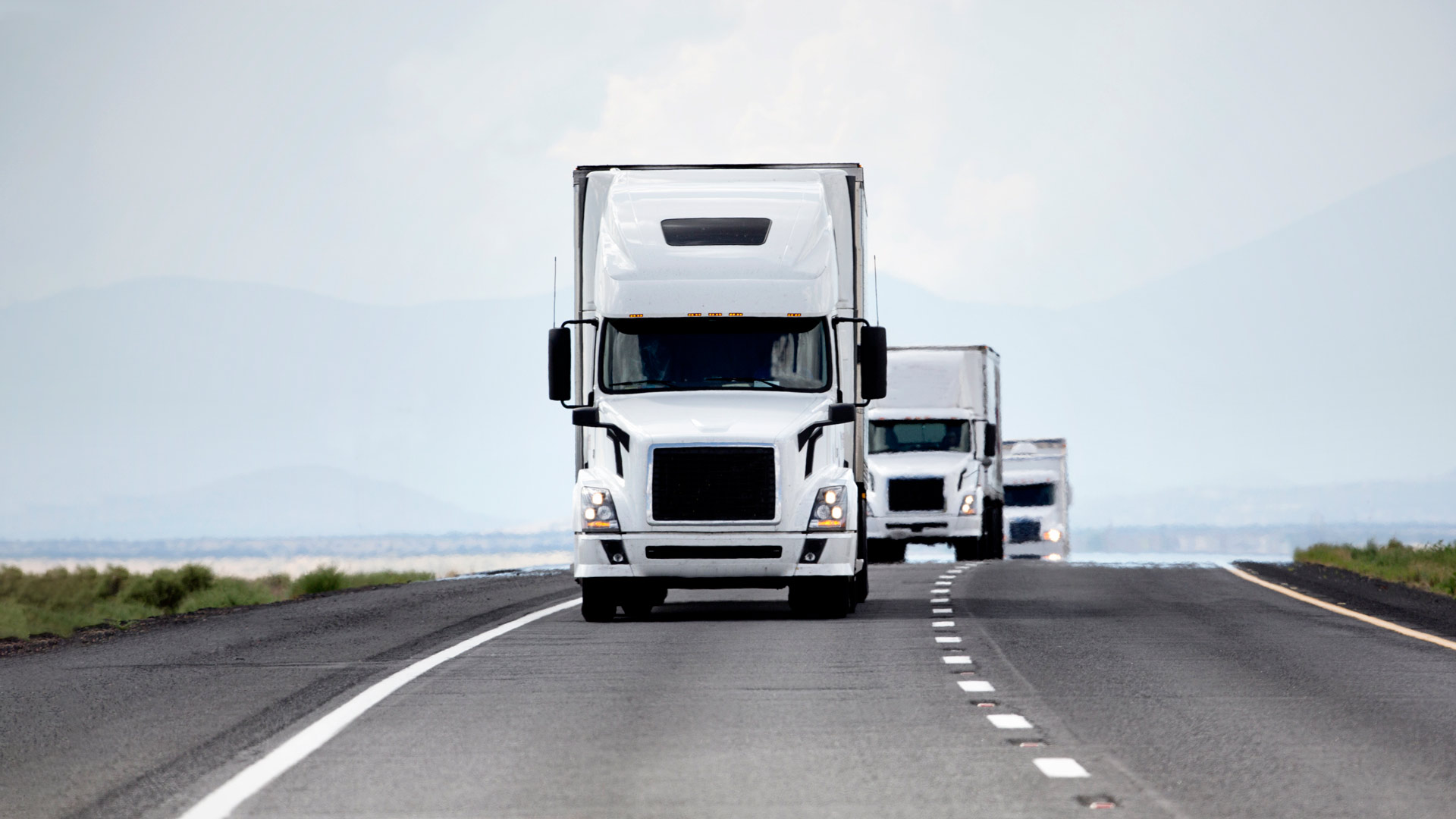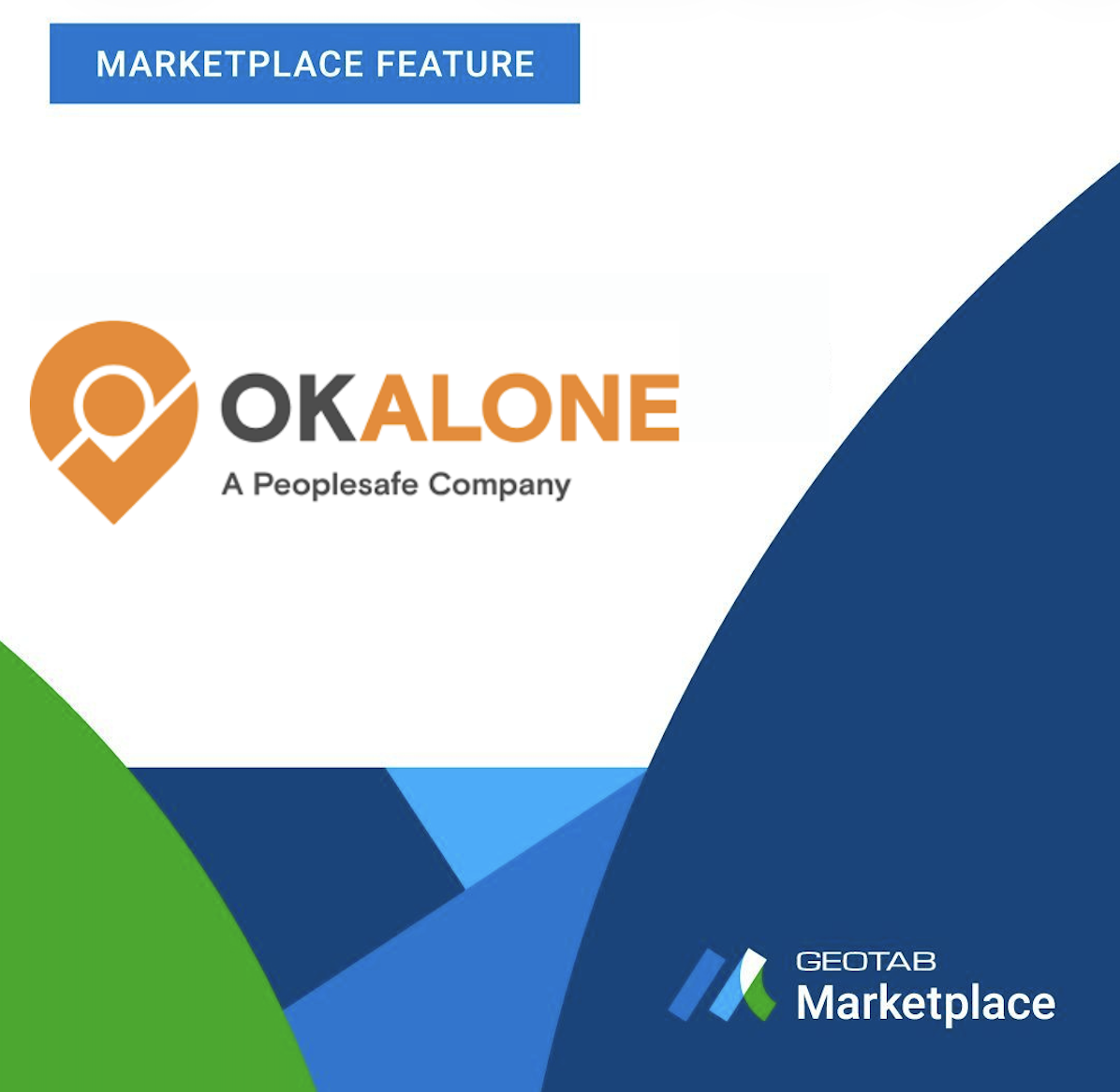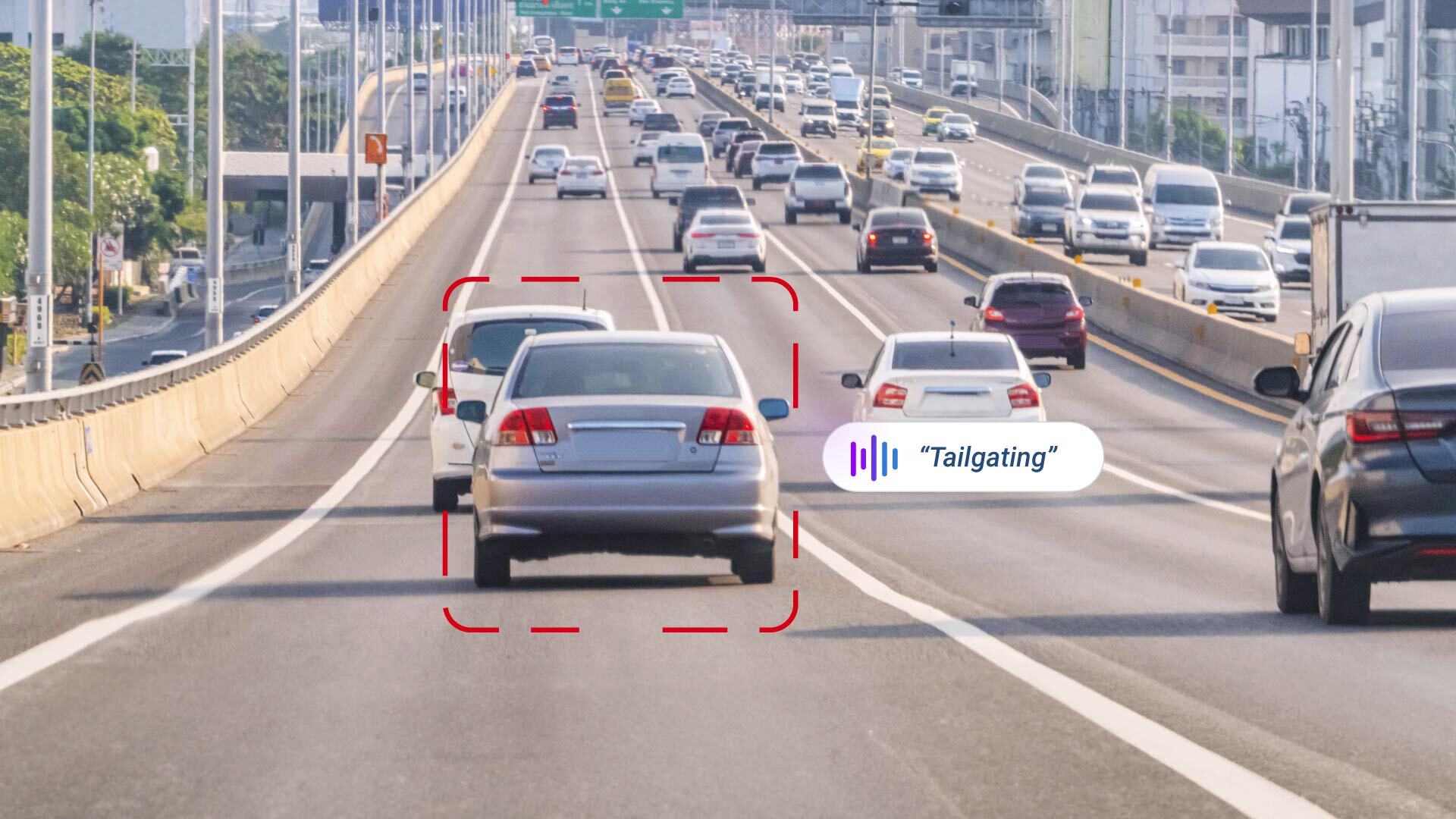What is fleet insurance? A guide to how fleet coverage works to protect vehicles
Fleet insurance covers multiple vehicles under one policy, helping businesses simplify coverage, reduce risk and cut costs. This guide explains how it works, what it covers and how to save on premiums.
By Geotab Team
Aug 6, 2025

Key Insights
- Fleet insurance simplifies coverage by insuring multiple vehicles under a single policy.
- It includes core protections like liability, physical damage and optional add-ons.
- Costs vary based on vehicle type, driving history, industry and location.
- Telematics and dashcams can help lower premiums through usage-based pricing.
Businesses consider fleet insurance the best and most efficient option for insuring more than one vehicle under the same policy. With fleet insurance, your company can insure numerous vehicles while eliminating the need for individual policies.
Large trucks account for 9% of all vehicles involved in fatal crashes. That’s why any business operating vehicles needs to have a comprehensive, well-managed fleet insurance policy in place.
In this guide, we’ll break down how fleet insurance works, what it covers, how much commercial truck insurance costs and what you can do to reduce your premiums.
What is fleet insurance?
Fleet insurance is a type of commercial auto insurance that covers multiple vehicles under one policy. It provides coverage for risks associated with operating fleets, physical damage and liability.
It’s designed for businesses that operate a fleet, typically five or more vehicles, and want to simplify insurance management, reduce paperwork and often lower overall costs.
This type of policy is especially convenient for businesses that operate a fleet because it:
- Reduces the number of policies to keep track of, creating less hassle for administrative staff
- Makes it easier to add or remove vehicles from the commercial truck insurance policy as the business scales
- Is simple to add drivers to the insurance policy as they are onboarded
- Allows businesses to insure all drivers on all vehicles or assign specific drivers to specific fleet vehicles
Fleet insurance helps businesses stay protected, compliant and focused without juggling multiple standalone policies.
How does fleet insurance work?
Fleet insurance combines coverage for multiple vehicles and drivers into a single policy. Instead of managing separate policies for each vehicle, businesses get one policy that covers their entire fleet, often with more flexible terms and cost benefits.
When onboarding new vehicles or drivers, you can simply update the existing policy without starting from scratch. You can choose to insure all drivers on all vehicles (known as “any driver” coverage) or assign specific drivers to specific vehicles.
Many policies also allow customization based on usage, location and fleet risk profile.
Types of fleet insurance
You can customize fleet insurance policies based on how your vehicles are used. Here are a few common types:
| Insurance types | Best for |
|---|---|
| Light vehicle fleet insurance | Cars and light-duty vans used for business operations, such as sales visits or service calls
|
| Heavy truck fleet insurance | Larger commercial vehicles such as transport trucks, delivery trucks or construction equipment |
| Mixed fleet insurance | Businesses with a combination of vehicles (e.g., vans, cars and trucks) |
| Any driver fleet insurance | Authorizing drivers in your organization to operate any fleet vehicle |
| Named driver fleet insurance | Restricting coverage to specific drivers assigned to certain vehicles |
| Telematics insurance | Adjusting premiums based on real-world driving behavior collected from GPS tracking or ELD systems |
What does fleet insurance cover?
Global Fleet reports that approximately 8.1 million automobiles and trucks on U.S. roads are classified as fleet vehicles. They define fleets as more than five vehicles owned by a specific company, and these vehicles make up about 3% of all vehicles owned in the country.
With such a large number of fleet vehicles on the road, as well as other types, the risk of collisions increases. Every driver needs to be covered under a policy while they are behind the wheel, and that policy needs to be comprehensive enough to protect the business from financial loss.
A fleet insurance policy typically includes a mix of required and optional coverage options, which you can tailor to the risks your business faces. Here are some fleet insurance requirements and coverages:
Automobile liability
Auto liability covers bodily injuries and property damage to any third party involved in a collision caused by your driver. This includes costs like:
- Medical bills
- Legal fees
- Repairs to other vehicles or property
Automobile physical damage
This covers damage to your own vehicles. It usually includes collision coverage (for accidents involving other vehicles or objects) and comprehensive coverage (for damage from weather, theft, vandalism or other non-collision events).
Uninsured or underinsured motorist coverage
If one of your drivers is involved in a collision with someone who doesn’t have insurance or doesn’t have enough coverage, this policy helps pay for your driver’s injuries or vehicle damage.
Medical payments or personal injury protection (PIP)
This covers medical expenses for your drivers and passengers, regardless of who’s at fault in a crash. PIP may also cover lost wages or rehabilitation costs, depending on your state's requirements.
Cargo or goods-in-transit coverage
If your vehicles carry valuable goods or materials, cargo coverage can protect you from financial loss if those items are lost, damaged or stolen during transport.
Hired and non-owned auto coverage (HNOA)
This covers vehicles your business uses but doesn’t own, like employee-owned cars used for deliveries or rental vehicles. It’s a useful addition for businesses with occasional or temporary vehicle needs.
Factors that influence fleet insurance costs
Fleet vehicle insurance doesn’t have a flat rate, which makes it hard to pin down an exact price. On average, you can expect to pay around $1,000 per vehicle per year, but that number can vary widely. Several factors can impact your total fleet insurance cost:
Industry
Some industries are renowned for riskier driving. For example, industries that have strict time factors, such as couriers, taxi services or personal drivers, are known to have higher insurance premiums.
This is because their performance is normally measured on their timeliness, which puts pressure on the driver to get to their destination quickly.
Type of vehicle
Just like regular vehicle insurance, the vehicle that you drive helps determine the price that you pay for your insurance policy.
Some of the attributes of your vehicle that can affect your insurance costs are its annual mileage, its age, and the location where it will be driven and parked when not being used.
Number of vehicles in your fleet
As a general rule, the more vehicles you have, the lower your insurance costs will be. This might make it harder for a smaller fleet to effectively lower the cost of its insurance premiums.
Prior collision or claim history
When you contact a new insurer, they will ask for your fleet insurance history, including any collisions that have occurred or claims that have been submitted. If the instances are significant, they could impact the cost of your insurance.
To reduce these risky behaviors, consider driver behavior monitoring tips and tricks to enhance your fleet safety.
Driver motor vehicle records
Many fleet companies need to ensure that their drivers have an updated motor vehicle record (MVR) every few years. An MVR record includes events such as collisions, suspensions, moving violations, criminal charges and more.
Insurance premiums can go up if your drivers show a history of risky on-road behaviors.
Location
If you operate in an urban area with a lot of other drivers, chances are that your fleet insurance costs will be a little bit higher. Driving in rural areas poses less of a risk due to fewer drivers on the road.
Deductibles
Assuming a higher deductible will help keep the cost of insurance premiums lower. However, it also means you'll pay more out of pocket if a claim is filed. It’s important to find the right balance.
Choose a deductible high enough to reduce your premiums but still manageable in the event of an incident. When deciding on the best deductible level, consider your fleet’s risk profile, cash flow and whether you have a formal fleet safety program in place.
How to lower fleet insurance premiums
Despite certain factors contributing to higher insurance rates, there are ways to keep those costs down and ensure that you aren’t overspending when it comes to insurance. Here are just some ways to help lower your fleet insurance:
1. Use telematics
Using an electronic logging device (ELD) to gather information from your fleet vehicles can help you save money on your fleet management insurance. Telematics software helps gather information about the safety of your drivers.
This includes information about harsh braking, rapid acceleration, speed, distracted driving and sharp turns. That way, you can supply your insurance provider with data indicating you operate a safe fleet and, ultimately, reduce fleet costs.
This method of calculating insurance costs is called usage-based insurance.
2. Identify areas for driver improvement
Identifying areas of improvement for your fleet drivers using driver scoring and coaching solutions helps pinpoint which drivers could benefit from advanced training. Having training courses on your drivers’ records helps strengthen your commitment to safe, effective driving in the eyes of your insurer.
3. Invest in fleet dash cameras
Equipping your fleet with dash cams helps identify risky behavior as it happens, including tailgating, lane departures and drowsy or distracted driving. Fleet dash cams also provide unequivocal proof in the case that a collision occurs and can help lower the cost of any incurred insurance claims.
Examples of fleet insurance companies
Choosing the right insurance provider can help protect your vehicles, drivers and cargo while supporting compliance with industry regulations. Below are examples of insurance companies that offer commercial fleet insurance or partner with telematics platforms like Geotab.
| Provider | Key features | Best for | Bundling/Discounts |
|---|---|---|---|
| 1st Guard | Specializes in trucking insurance, direct carrier, online policy management | Owner-operators and small fleets | Flexible coverage with simple claims handling |
| Cover Whale Insurance | Telematics-first underwriting, fast online quoting | Small trucking companies and new ventures | Savings for safe driving |
| Cottingham & Butler | Dedicated fleet risk services, loss control programs | Trucking, logistics and transportation companies | Telematics-based incentives |
| HDVI Shift | Dynamic insurance pricing based on telematics data | Small to mid-sized trucking fleets | Discounts for improved safety scores |
| HUB International | Fleet insurance plus risk management and compliance services | Diverse fleet operations | Custom programs for fleets |
Tips to choose the right fleet insurance
Choosing an insurer can be time-consuming, but it is also a very personal and customizable experience that differs from one business to the next. Here are some ways you can get the best fleet insurance plan for your business:
Get familiar with your data
Benchmarking yourself against others using fleet data analytics can help give you a good idea of where you stand when it comes to operating safely. This should give you a good idea of what kind of situations you need insurance for.
From there, you can create a checklist of things to look for and questions to ask when you research different fleet insurance options.
Consider insurers with add-ons
Some insurers offer add-ons with their policies that might be necessary for your fleet, such as:
- Increased coverage for physical damage
- Higher liability coverage
- Product insurance for the assets being transported
- Roadside assistance coverage
- Uninsured motorist coverage
Look for performance-based discounts
You can also ask about other performance-based discounts. Some insurers offer reduced premiums for clean driving records or fleets with no recent claims. If your data shows your team is driving responsibly, make sure your insurer rewards you for it.
Protect your business with fleet insurance
More than just a legal requirement, fleet insurance is a strategic asset. The right policy helps you protect your drivers, vehicles and business from unexpected financial loss, all while simplifying the insurance process as you grow.
By leveraging tools like vehicle telematics devices, dash cams and data-driven coaching, you can reduce premiums and show insurers that your fleet takes safety seriously.
Learn more about how Geotab can help you leverage your telematics data, lower insurance costs and promote safe driving initiatives today.
Subscribe to get industry tips and insights
Frequently Asked Questions
Fleet insurance typically covers all drivers authorized to operate the vehicles in your fleet, whether they're full-time employees or occasional drivers. It also covers the vehicles themselves and may include liability, collision and comprehensive protection.
Fleet insurance covers multiple vehicles under a single policy, making it easier to manage and often more cost-effective than insuring each vehicle individually.
Most insurers require at least two vehicles on average to qualify for a fleet insurance policy, but this number can vary depending on the provider.
Yes, businesses with fewer vehicles may opt for individual commercial auto policies or consider usage-based insurance to help manage costs.
The Geotab Team write about company news.
Table of Contents
- What is fleet insurance?
- How does fleet insurance work?
- Types of fleet insurance
- What does fleet insurance cover?
- Factors that influence fleet insurance costs
- How to lower fleet insurance premiums
- Examples of fleet insurance companies
- Tips to choose the right fleet insurance
- Protect your business with fleet insurance
Subscribe to get industry tips and insights
Related posts

Collision avoidance systems: How fleets prevent incidents and improve safety
December 23, 2025
5 minute read
.png)
From the North Pole to the Highway: How AI and Predictive Insights Get Drivers Home for the Holidays
December 16, 2025
2 minute read
.jpg)
.png)
AI dash cams vs. traditional: Which delivers better fleet safety?
December 8, 2025
5 minute read

Elevating Worker Safety Through Simplicity: The OK Alone Story
December 3, 2025
2 minute read

Geotab GO Focus Plus Camera Rules, Thresholds, and Event Buffers Explained
October 27, 2025
2 minute read